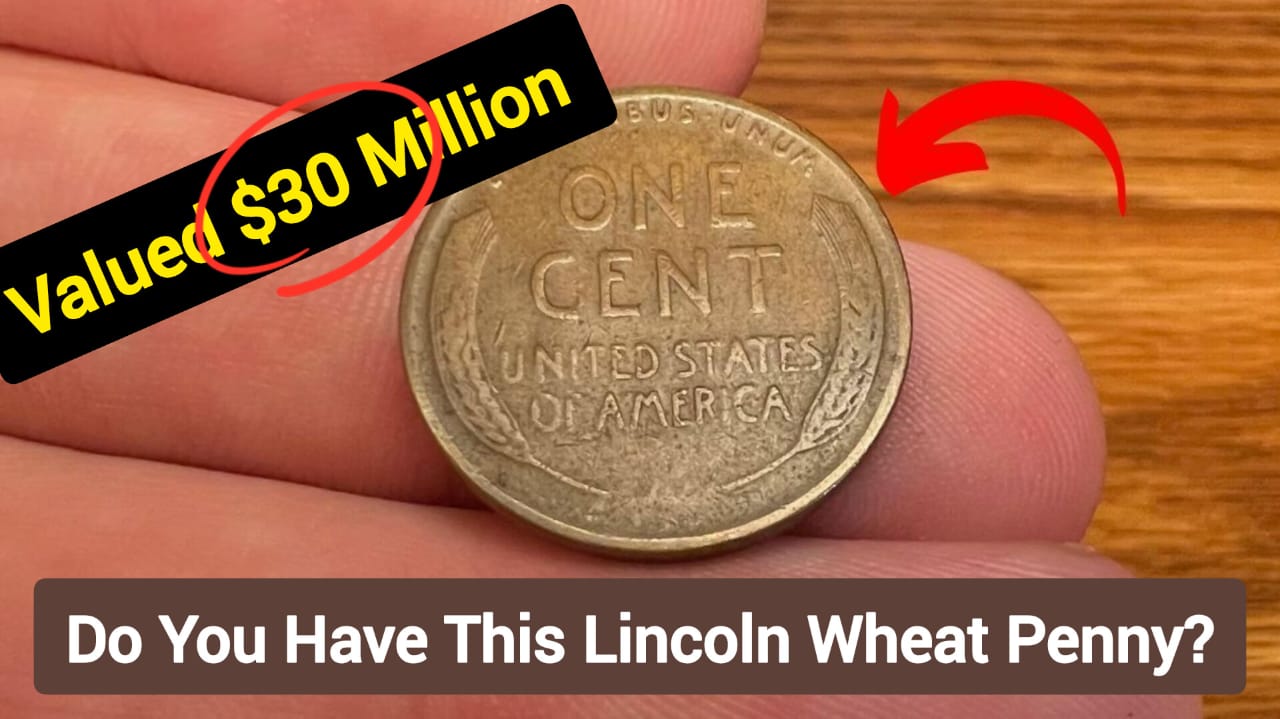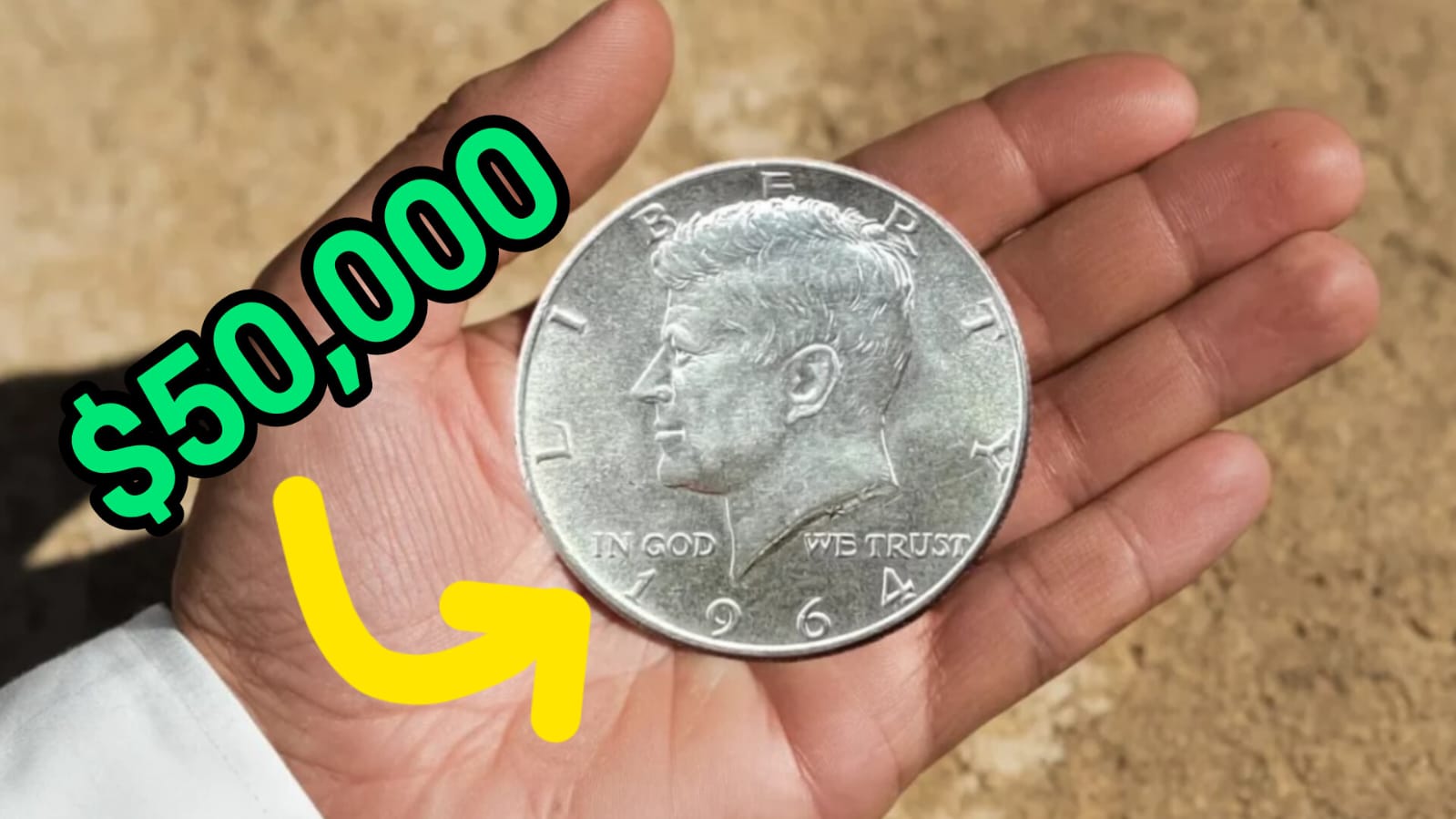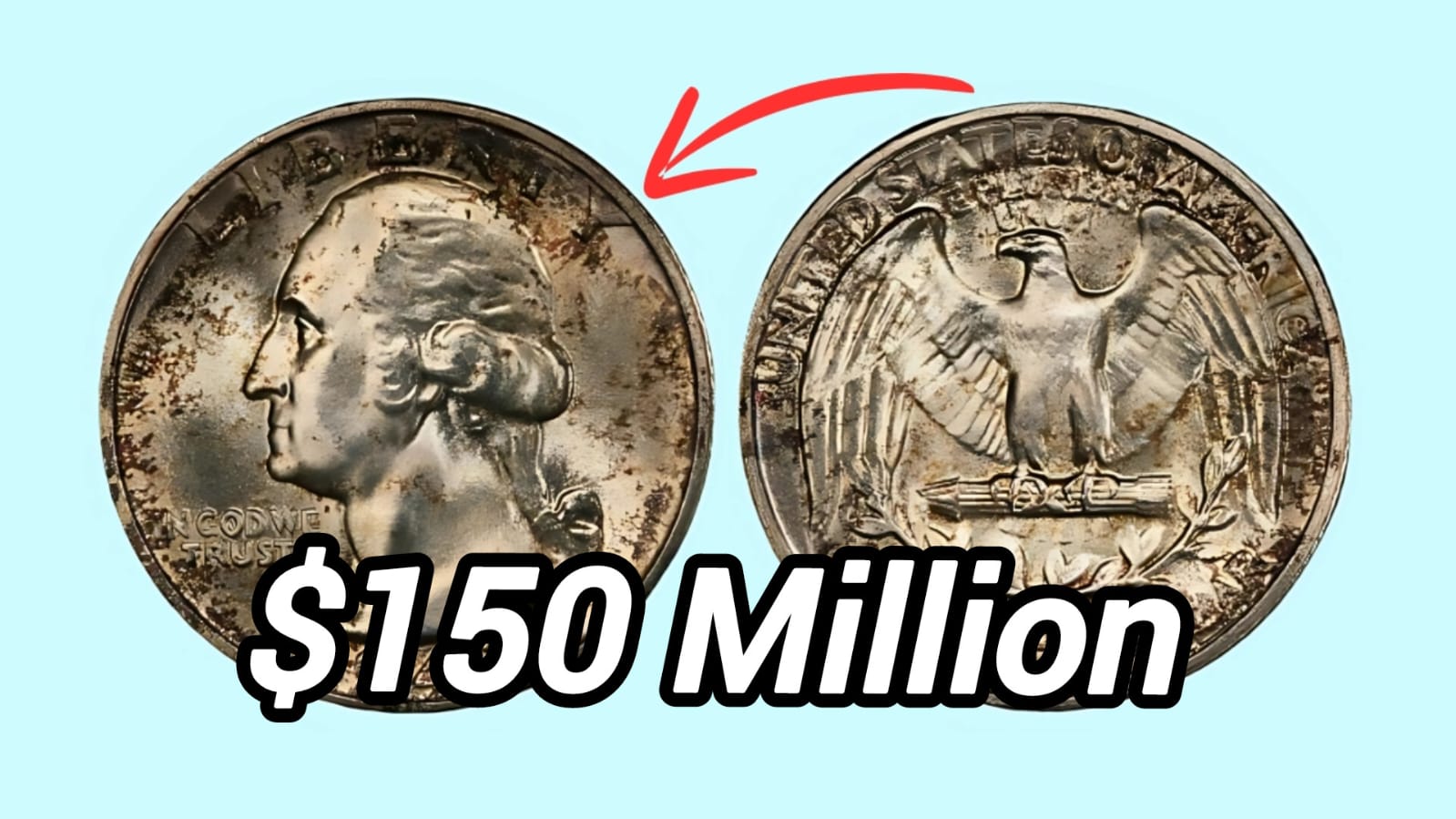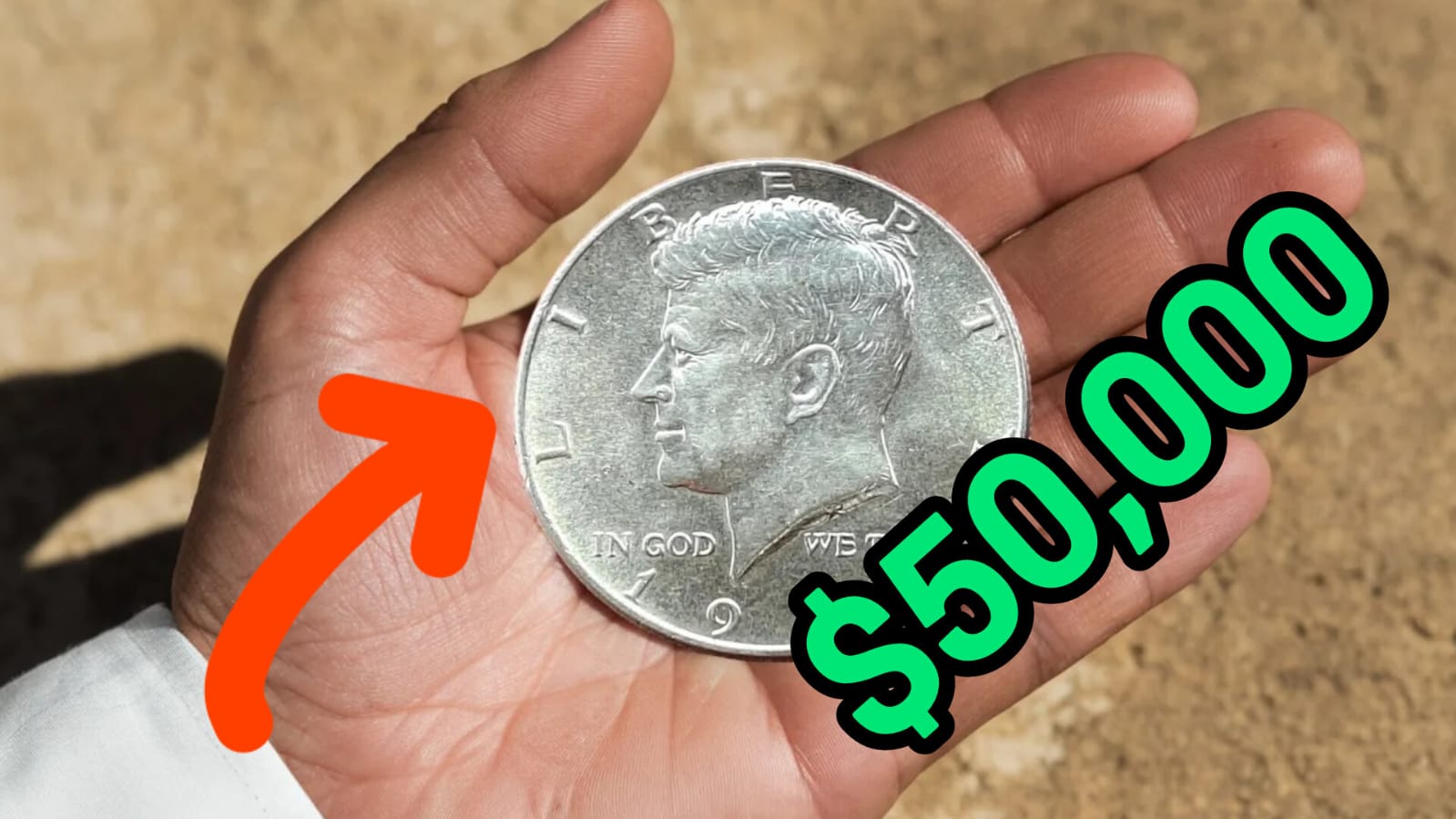Have you ever glanced at the pennies jingling in your pocket and wondered if any of them might be worth more than just one cent? While most of us toss our loose change without a second thought, some coins—particularly rare Lincoln Wheat Pennies—can be worth staggering amounts to collectors.
The truth is, while claims of pennies worth $30 million are greatly exaggerated, some genuinely rare Lincoln Wheat Pennies can fetch thousands or even hundreds of thousands of dollars at auction.
And the most exciting part? Some of these valuable coins could still be circulating today, perhaps hiding in your spare change jar or passing through your hands in everyday transactions.
The Lincoln Wheat Penny, produced from 1909 to 1958, has become one of America’s most beloved and collected coins. With its iconic portrait of Abraham Lincoln on the obverse and two wheat stalks framing the reverse, these pennies represent a tangible connection to our nation’s past.
While most wheat pennies you’ll find are worth only a few cents above face value, certain rare dates, mint marks, and error coins can be worth substantial sums to collectors. Let’s dive into the fascinating world of these potentially valuable coins and discover what makes certain Lincoln Wheat Pennies true numismatic treasures.
The Most Valuable Lincoln Wheat Pennies
While the $30 million valuation mentioned in viral headlines is a myth, several Lincoln Wheat Pennies genuinely command impressive prices. Here are the most valuable specimens that have collectors constantly searching their change:
The 1943 Bronze Penny: The Million-Dollar Mistake
The most valuable Lincoln Wheat Penny—and the likely source of exaggerated valuations—is the 1943 Bronze Penny. During World War II, copper was needed for the war effort, so the U.S. Mint produced pennies made of zinc-coated steel instead.
However, a few copper planchets (coin blanks) from 1942 accidentally made it into the production line, resulting in a handful of copper pennies being struck in 1943.
These 1943 Bronze Pennies are extremely rare, with only about 20 confirmed examples known to exist. In 2010, a 1943-D Bronze Penny sold for $1.7 million at auction, making it one of the most valuable small cents ever sold. While not worth $30 million, finding one of these rare pennies would certainly be life-changing!
To identify a genuine 1943 Bronze Penny:
- It should have the date 1943
- It should be copper/bronze in color (not silver/steel like regular 1943 pennies)
- It should NOT stick to a magnet (steel pennies will)
- It should weigh approximately 3.11 grams (steel pennies weigh about 2.7 grams)
The 1944 Steel Penny: The Reverse Error
Just as some 1943 pennies were mistakenly struck in bronze, some 1944 pennies were accidentally struck on leftover steel planchets. These 1944 Steel Pennies are also extremely rare and valuable, with examples selling for $75,000 to $125,000 depending on condition and mint mark.
To identify a 1944 Steel Penny:
- It should have the date 1944
- It should be silver/steel in color (not copper/bronze like regular 1944 pennies)
- It should stick to a magnet
- It should weigh approximately 2.7 grams
The 1909-S VDB: A Collector’s Dream
The 1909-S VDB penny is perhaps the most famous Lincoln Wheat Penny among collectors. The “VDB” refers to the initials of the coin’s designer, Victor David Brenner, which appear on the reverse.
The San Francisco Mint (indicated by the “S” mint mark) produced only 484,000 of these pennies before the initials were removed due to public controversy.
In excellent condition, a 1909-S VDB penny can sell for $2,000 to $10,000, with the finest examples commanding even higher prices. While not in the millions, finding one of these in your change jar would certainly be cause for celebration!
How to Identify Valuable Lincoln Wheat Pennies
Before you dump out your penny jar and start examining each coin, here’s what you need to know to identify potentially valuable specimens:
Key Dates and Mint Marks
The most valuable Lincoln Wheat Pennies are typically those with low mintages or from specific mints. Here are the key dates to look for:
| Year | Mint Mark | Key Features | Estimated Value (in Good Condition) |
|---|---|---|---|
| 1909 | S | VDB initials on reverse | $700+ |
| 1914 | D | Low mintage | $250+ |
| 1922 | None | Plain (No D) error | $500+ |
| 1931 | S | Low mintage | $100+ |
| 1943 | All | Bronze (not steel) | $100,000+ |
| 1944 | All | Steel (not bronze) | $75,000+ |
| 1955 | None | Doubled Die Obverse | $1,000+ |
The mint mark, if present, can be found on the obverse (front) of the coin below the date. The Philadelphia Mint didn’t use a mint mark, while Denver used “D” and San Francisco used “S.”
Condition Matters
The condition of a coin dramatically affects its value. Numismatists (coin collectors) use a grading scale from Poor (P-1) to Mint State (MS-70). A coin in “Good” condition shows considerable wear but major details are still visible.
“Fine” condition means moderate wear with more details evident. “Uncirculated” or “Mint State” coins show no wear and command the highest prices.
Think of coin grading like judging the condition of a vintage car—a well-preserved, original-condition model will always be worth more than one that’s been heavily used and shows significant wear and tear.
Error Coins: When Mistakes Become Valuable
Some of the most valuable Lincoln Wheat Pennies are those with minting errors. Here are some errors to watch for:
- Doubled Die: Shows doubling in the design elements, like the famous 1955 Doubled Die
- Off-Center Strikes: When the coin isn’t properly centered during striking
- Wrong Planchet: Like the 1943 bronze and 1944 steel pennies mentioned earlier
- Repunched Mint Marks: When the mint mark was punched multiple times in slightly different positions
These errors are like typos in first-edition books—mistakes that make the item rare and more valuable to collectors.
How to Find Valuable Lincoln Wheat Pennies
Ready to start hunting for these valuable coins? Here are some strategies to help you in your search:
Check Your Change and Collections
The most obvious place to start is with any wheat pennies you already have. Look through old coin jars, inherited collections, and even your everyday change. Pay special attention to the dates and mint marks of any wheat pennies you find.
Search Coin Rolls
Bank rolls of pennies can sometimes contain overlooked treasures. While the odds of finding extremely rare specimens are low, many collectors have found valuable coins this way. It’s like fishing—you might not catch a trophy on every cast, but persistence increases your chances.
Attend Estate Sales and Auctions
People often sell old coin collections without realizing their true value. Estate sales, garage sales, and auctions can be gold mines for finding valuable pennies at bargain prices.
Join Coin Collecting Communities
Connect with other collectors through clubs or online forums. These communities often share tips on where to find rare coins and can help authenticate potential discoveries.
Authentication: Separating Treasures from Fakes
If you believe you’ve found a valuable Lincoln Wheat Penny, proper authentication is crucial. Here’s how to verify your find:
- Detailed Examination: Use a magnifying glass to check for signs of alteration or authentic error features.
- Weight and Measurement: Compare your coin’s weight and dimensions to known specifications.
- Professional Grading: For potentially valuable coins, consider professional authentication services like PCGS (Professional Coin Grading Service) or NGC (Numismatic Guaranty Corporation).
Remember, the most valuable Lincoln Wheat Pennies are also the most frequently counterfeited. Professional authentication is worth the investment if you believe you’ve found something special.
Conclusion
While the claim of Lincoln Wheat Pennies worth $30 million is certainly a myth, the reality is still fascinating and potentially lucrative. Genuine rare specimens like the 1943 Bronze Penny have sold for over a million dollars, and others command tens or hundreds of thousands.
The thrill of the hunt and the possibility of finding a small fortune in your pocket change makes searching for these rare pennies an exciting endeavor.
As you sort through your coins, remember that knowledge is your most valuable tool. Understanding what makes certain pennies valuable and how to identify them increases your chances of finding a genuine treasure.
Even if you don’t discover a million-dollar penny, the journey through American history and numismatics is rewarding in itself. So check those coin jars, roll up your sleeves, and happy hunting!
FAQs About Valuable Lincoln Wheat Pennies
1. Is there really a Lincoln Wheat Penny worth $30 million? No, this is a myth. The most valuable Lincoln Wheat Penny ever sold was a 1943-D Bronze Penny that fetched approximately $1.7 million at auction. While this is far from $30 million, it’s still an incredible return on a one-cent coin.
2. How can I tell if my 1943 penny is the valuable bronze version? A genuine 1943 Bronze Penny will have a copper color (not silver/steel), won’t stick to a magnet, and will weigh about 3.11 grams. However, many counterfeits exist, so professional authentication is essential for suspected valuable specimens.
3. Are wheat pennies still in circulation today? Yes, Lincoln Wheat Pennies can still be found in circulation, though they’re becoming increasingly rare. Most were removed from circulation decades ago, but some still turn up in change, old coin jars, and collections.
4. What should I do if I think I’ve found a valuable penny? Handle it carefully by the edges, place it in a protective holder, and consider getting it professionally authenticated by a reputable service like PCGS or NGC. Don’t clean the coin, as this can significantly reduce its value.
5. Besides the rare dates mentioned, are there other valuable Lincoln Wheat Pennies worth looking for? Yes! Many other Lincoln Wheat Pennies have significant value, especially those with errors or in excellent condition.
The 1917 Doubled Die, 1936 Doubled Die, and 1958 Doubled Die are all worth looking for, along with any wheat penny showing unusual errors or striking characteristics.
$250 + $750 boost Centerlink Pension Payments – check who Qualifies and How to Get It ?
10 Rare Jefferson Nickels Worth $500 Each – Hidden Treasures in Your Pocket Change



